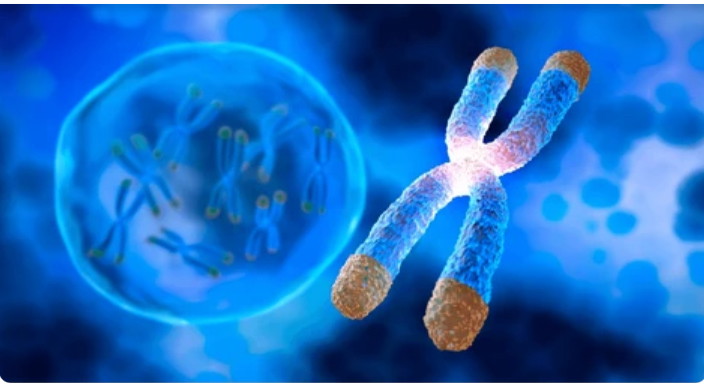Telomeres and Longevity
Telomeres and Longevity

The first Yoga Sutra of Patanjali (book on yoga philosophy) is “Yama,” which refers to ethical disciplines. Yamas are basically a guide for how to interact with the world and others in a way that is “harmonious and beneficial.” I think for many who are introduced to yoga philosophy, it may be surprising that the way we act with others is at the “top of the list.”
This philosophy points to the fact that our social environment, how we treat others and even how we hold (in our hearts and minds) the entire world around us is more important than we have acknowledged recently. Many of us may block out what is happening halfway across the world due to the idea that it’s not affecting me here and now. I think now more than ever, as we become more educated on the health of our planet globally, socially, and politically; we can no longer ignore the traumas that are happening daily and believe that it “doesn’t relate to me.” Ultimately, we can only help effect the communities we are in but also remain aware, sensitive, and compassionate to humanity on the global scale. Although this may seem overwhelming and heavy, we cannot lose sight of how important social and global health is to our own health.
Fifteen years ago, I was introduced to telomeres when I attended a medical talk with my dear friend and mentor Emmy Cleaves. It was then that I learned why it’s important to have “healthy telomeres” and their effects on overall health and longevity.
I recently came across the topic again in Dr. Gabor Mates’ book, The Myth of Normal. Here he highlights current findings on telomeres and our individual health, which have to do with environment and social traumas. This brings into light the importance of social justice issues such as racial and ethnic inequality, economic disparities, gender inequality, environmental injustice such as access to clean air and water, along with lack of access to food, healthcare, and education.
In 2009, Dr. Elizabeth Blackburn received the Nobel Prize in Physiology for her work on telomeres-minuscule DNA structures at the end of chromosomes. Her research showed they keep them from splitting in the same way the plastic tips at the end of shoelaces stop them from fraying. These tiny sheaths protect chromosomal integrity.
For those of us who need a little review, chromosomes are thread-like structures that carry genetic information in the form of DNA in the nucleus of cells. Essentially organized packages of DNA, chromosomes ensure the genetic material is properly replicated and passed on during cell division. Telomeres are protective DNA-protein structures located at the ends of chromosomes. They are crucial for maintaining chromosome integrity and are involved in cell aging and cancer. As cells divide, telomeres become shorter. This shortening acts as a biological clock, which triggers cell aging and cell death. This process also helps prevent uncontrolled cell division and tumor formation. With cancer cells, telomeres can become dysfunctional by leading to instability and potential for uncontrolled growth.
The importance of these cells is that as chromosomes unravel, so do we. Our unraveling shows as premature aging and shortening of healthy chromosomes. Tracking the length and stability of telomeres throughout the lifespan can tell us a great deal about our health and longevity.
It has been discovered that these tiny biological structures also have significant social implications. Dr. Blackburn noted that telomeres bear the actual markers of the circumstances of our lives, when she found that factors such as poverty, racism, and urban decay can directly impact our genetic and molecular functioning. Working closely with Dr. Blackburn, psychologist Dr. Elissa Epel realized that these effects are not small. Their combined work is called “The Telomere Effect: A Revolutionary Approach to Living Younger, Healthier, and Longer.” The first question asked is, “How long do you want to live?” Whatever the number is, all of us agree that although we may want to live long, we want to live disease-free. We do not want to suffer. The research continues to highlight that the health of our telomeres is dependent on our individual and communal happiness as well, which scientifically effects our health and longevity. There is only one way to limit disease, and that is to slow the biological aging. Part of biological aging has to do with “aging of our cells,” which has to do with the health of our telomeres.
Scientific discoveries like these show that there is a deeper relationship between the holistic model of who we are and our physical health. For true healing to happen, it needs to be approached from a broader, more holistic understanding. The biggest takeaway is that we are not just brain and behavior, but an entire organism whose responsiveness to environmental cues deeply affects us throughout our lifespan.
These findings are fascinating and highlight what many of us already know. We need relationships and communities more than ever. We need to take social justice issues seriously and care more for our communities and, ultimately, the world around us. During the pandemic, the high numbers of depression, anxiety, and mostly loneliness magnified the deeper-rooted problems and triggers for mental and emotional health.
Back to the first pillar of yoga philosophy, with the most important being not yoga or even meditation practice but how we behave towards our environment, our world, and, ultimately, the people we surround ourselves with. For me this highlights the importance of taking care of our communities and each other, and doing what we can in our day-to-day lives to ensure the rest of the World is affected positively as well. We need to make each other’s health and safety the priority. The support and health of our individual communities will help us sustain and spread health and wellness to each other and benefit future generations.



